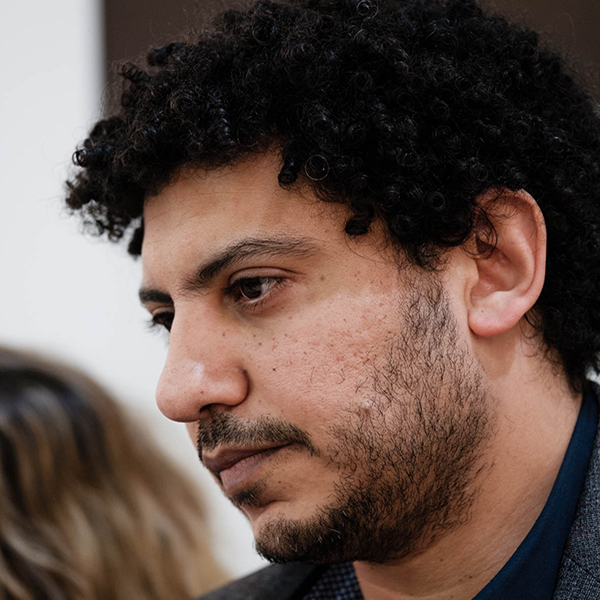Exhibition curated by Abdellah Karroum
Fondazione Merz, 3 November 2016 – 5 February 2017
This site-specific exhibition by Wael Shawky is based on Al Araba Al Madfuna, a film trilogy inspired by Mohammed Mostajab’s novels Dayrout Al Sharif. The trilogy was shot in the Egyptian village of the same name with Shawky filming the third part in the ancient Abydos temple, which is connected to Al Araba Al Madfuna village via an underground passage. The exhibition at the Merz Foundation, which features the installations of the Al Araba Al Madfuna series, drawings, and large installations, fills the entire space of the foundation, including its exterior areas. Together with the screenings, architectural models and set designs specially created for the exhibition generate an original atmosphere inspired by the historical, literary and cinematographic references from which the artist constructed his stories. An artist’s book accompanies the exhibition.
Wael Shawky is the winner of the first edition of the Mario Merz Prize. The visitors’ vote was supplemented by that of the jury, composed of Manuel Borja-Villel, Massimiliano Gioni, Beatrice Merz and Lawrence Weiner, who gave the following grounds for their decision: “In spite of the excellent contributions provided by the 5 finalists, in terms of quality, deep conceptual approach and precision of the medium used, we have found Wael Shawky’s stance to best meet the scope of this project. His work combines thematic richness, the ability to mingle sometimes intractable issues and their effective depiction, the use of film as language and a surprisingly innovative and contemporary narrative technique. Through his evocative poetic language, studied settings, thoughtful reflections on tradition, courage to eschew a Western perspective to remain in Egypt and relate the great history of the Arab world and the Middle East as a whole, Shawky has shown himself to be an artist with a wealth of inspiration. His approach relies more on the language of art to show the contradictions that emerge in the engagement between distant cultures and religious faiths than on the literal historical relevance of the events described. In this respect, Wael Shawky’s is the perfect representation of a generation’s specific point of view and as such deserves the award, enabling him to present a new project in a solo exhibition.”





















































